261 scholarly books by Bodleian Library Publishing and 7
have author last names that start with F
261 scholarly books by Bodleian Library Publishing and 7
261 scholarly books by Bodleian Library Publishing
7 have author last names that start with F have author last names that start with F
7 have author last names that start with F have author last names that start with F
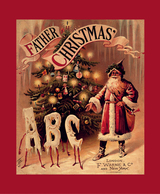
Father Christmas' ABC
Bodleian Library F. Warne & Co.
Bodleian Library Publishing, 2005
Q is the Quadrille, danced at our party
R is for the Reindeer, of Santa Claus hearty
W is for waggon laden with holly
X is for Xmas tree all light and toys jolly
The celebration of Christmas throughout history is marked by rich traditions around the globe, yet British festive customs—exchanging gifts, singing carols, trimming the magnificent tree, and sipping wassail—take pride of place in our imaginations. Allowing us a glimpse of some of these customs is a facsimile edition of an Father Christmas' ABC, an1894 Victorian classic that chronicles the activities surrounding the holiday more than a century ago.
Each charming color painting, one for each letter of the alphabet, reveals a custom of a Victorian Christmas. From the lighting of candles on the tree to bell ringing, ice skating, and making jam tarts, the beautiful illustrations vividly bring to life the spirit of the holiday and its history.
Accompanying the illustrations are clever ABC verses that at the time were an alphabet primer and now are an intimate glimpse of Victorian domestic life. The lively verse recounts various holiday traditions, transporting us to the warmth and cozy comfort of a British home at Christmastime.
Together, the rich illustrations and captivating verses create a unique and enchanting picture book on the special moments of Christmas. Father Christmas' ABC will appeal to readers of all ages as a nostalgic window into Christmases of a bygone time.
R is for the Reindeer, of Santa Claus hearty
W is for waggon laden with holly
X is for Xmas tree all light and toys jolly
The celebration of Christmas throughout history is marked by rich traditions around the globe, yet British festive customs—exchanging gifts, singing carols, trimming the magnificent tree, and sipping wassail—take pride of place in our imaginations. Allowing us a glimpse of some of these customs is a facsimile edition of an Father Christmas' ABC, an1894 Victorian classic that chronicles the activities surrounding the holiday more than a century ago.
Each charming color painting, one for each letter of the alphabet, reveals a custom of a Victorian Christmas. From the lighting of candles on the tree to bell ringing, ice skating, and making jam tarts, the beautiful illustrations vividly bring to life the spirit of the holiday and its history.
Accompanying the illustrations are clever ABC verses that at the time were an alphabet primer and now are an intimate glimpse of Victorian domestic life. The lively verse recounts various holiday traditions, transporting us to the warmth and cozy comfort of a British home at Christmastime.
Together, the rich illustrations and captivating verses create a unique and enchanting picture book on the special moments of Christmas. Father Christmas' ABC will appeal to readers of all ages as a nostalgic window into Christmases of a bygone time.
[more]
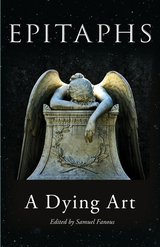
Epitaphs
A Dying Art
Samuel Fanous
Bodleian Library Publishing, 2016
Epitaphs are words to be remembered by, short poems or phrases literally written in stone. They can be practical, carrying some variation of the familiar “Here Lies,” but they can also be brilliantly creative with personally meaningful quotes or words written especially by or for the deceased. From the simple to the cleverly cryptic, epitaphs are meant to leave a lasting impression—and many certainly do.
Epitaphs brings together more than 250 epitaphs from cemeteries, churchyards, monuments, and historical records. Some announce the cause of death with a surprisingly macabre sense of humor: “Here lies John Ross. Kicked by a hoss.” Others wryly remind readers of their own impending mortality, such as a tombstone whose rhyming inscription reads “As I am now you will surely be. / Prepare thyself to follow me.” In death as in life, many of the most famous writers were not at a loss for words. Emily Dickinson’s concise wit is evident in her headstone’s inscription “Called Back.” Yeats encouraged the horsemen of the apocalypse to “pass by.” Shakespeare’s funerary monument at Stratford-upon-Avon carries the warning “Curst be he that moves my bones,” an inscription many believe the Bard himself wrote to prevent his corpse from being exhumed in the name of research, a common practice at the time.
As tribute to a form of expression that is very much alive, Epitaphs collects some of the most intriguing examples, many of which perfectly encapsulate the person buried beneath them.
Epitaphs brings together more than 250 epitaphs from cemeteries, churchyards, monuments, and historical records. Some announce the cause of death with a surprisingly macabre sense of humor: “Here lies John Ross. Kicked by a hoss.” Others wryly remind readers of their own impending mortality, such as a tombstone whose rhyming inscription reads “As I am now you will surely be. / Prepare thyself to follow me.” In death as in life, many of the most famous writers were not at a loss for words. Emily Dickinson’s concise wit is evident in her headstone’s inscription “Called Back.” Yeats encouraged the horsemen of the apocalypse to “pass by.” Shakespeare’s funerary monument at Stratford-upon-Avon carries the warning “Curst be he that moves my bones,” an inscription many believe the Bard himself wrote to prevent his corpse from being exhumed in the name of research, a common practice at the time.
As tribute to a form of expression that is very much alive, Epitaphs collects some of the most intriguing examples, many of which perfectly encapsulate the person buried beneath them.
[more]
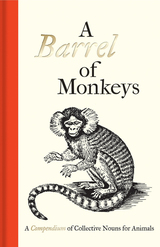
A Barrel of Monkeys
A Compendium of Collective Nouns for Animals
Samuel Fanous
Bodleian Library Publishing, 2015
What should we call the wild animals we spot from our windows? A surfeit of skunks? A dray of squirrels? A patient watch of wildlife enthusiasts might even catch sight of a skulk of foxes or a scavenging sloth of bears. The practice of inventing collective nouns for animals is an ancient pastime which derives from medieval hunts, but the list has been augmented in every age—and it remains an entertaining pastime today.
A Barrel of Monkeys brings together more than one hundred collective nouns for animals, from a bloat of hippopotamuses to a caravan of camels, a tower of giraffes, and a leap of leopards. The rivalry between male rhinoceroses becomes especially apt when the rowdy ungulates are characterized as a crash of rhinos. An ambush of tigers is an apt characterization of the skillful hunters that silently stalk their prey. A blend of wordplay, puns, and alliteration, some of the terms collected here are now commonplace, like a pride of lions. Others aren’t heard much these days, but many—like a dazzle of zebras or a prickle of porcupines—richly deserve a comeback.
With charming illustrations by the eighteenth-century artist and naturalist Thomas Bewick, A Barrel of Monkeys is the perfect follow-up to A Conspiracy of Ravens, the Bodleian Library’s book of bird words. Not even a crash of rhinos can stop readers from smiling at this second collection.
A Barrel of Monkeys brings together more than one hundred collective nouns for animals, from a bloat of hippopotamuses to a caravan of camels, a tower of giraffes, and a leap of leopards. The rivalry between male rhinoceroses becomes especially apt when the rowdy ungulates are characterized as a crash of rhinos. An ambush of tigers is an apt characterization of the skillful hunters that silently stalk their prey. A blend of wordplay, puns, and alliteration, some of the terms collected here are now commonplace, like a pride of lions. Others aren’t heard much these days, but many—like a dazzle of zebras or a prickle of porcupines—richly deserve a comeback.
With charming illustrations by the eighteenth-century artist and naturalist Thomas Bewick, A Barrel of Monkeys is the perfect follow-up to A Conspiracy of Ravens, the Bodleian Library’s book of bird words. Not even a crash of rhinos can stop readers from smiling at this second collection.
[more]
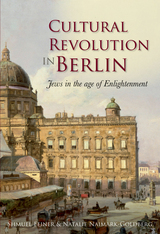
Cultural Revolution in Berlin
Jews in the Age of Enlightenment
Shmuel Feiner
Bodleian Library Publishing, 2011
The Enlightenment, which marked a social and philosophical turn away from religion and toward science and reason, swept across Europe in the eighteenth century, and these civil and rational values were embraced byJewish intellectuals, bringing about a cultural revolution within traditional Jewish society. The story of this transformation is presented here through a close look at the works held in the Leopold Müller Memorial Library of the Oxford Centre for Hebrew and Jewish Studies, which was the private library of Leopold Zunz, the father of the “Science of Judaism.”
As Shmuel Feiner and Natalie Naimark-Goldberg reveal in this insightful and approachable history, the Jewish Enlightenment (Haskalah) was a multifaceted movement, articulated in many different ways in the varied settings where Jews lived. Rather than providing a comprehensive story of the Haskalah, Feiner and Naimark-Goldberg use these impressive literary treasures to trace the cultural transformation that took place mainly in Germany, from its moderate and scattered beginnings in the early 1700s, through the height of the movement in the second half of the eighteenth century, until its final stage around 1800, when the Haskalah began to give way to new movements and ideologies.
Richly illustrated with images of eighteenth-century manuscripts, books, and pamphlets, Cultural Revolution in Berlin provides an excellent guide to the significant cultural metamorphosis brought about by the Jewish Enlightenment.
[more]
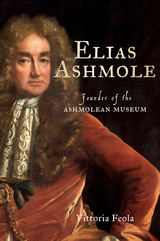
Vittoria Feola
Bodleian Library Publishing
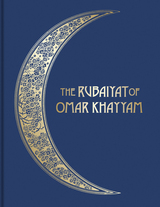
The Rubáiyát of Omar Khayyám
Illustrated Collector's Edition
Edward Fitzgerald
Bodleian Library Publishing, 2014
A book of verses underneath the bough,
A jug of wine, a loaf of bread—and thou.
The Rubáiyát is one of the most popular poems of all time. A collection of quatrains composed in the eleventh century by Persian poet and philosopher Omar Khayyám, it was first published in English-language translation by Edward Fitzgerald in 1859. Since then, its melancholy tone and enigmatic philosophy of mourning the painful brevity of life while celebrating what pleasures we may find have made it an inspiration to many writers, including Matthew Arnold and Thomas Hardy. More recently, it has also been the subject of many music adaptations and films.
This collector’s edition of The Rubáiyát features stunning full-color illustrations created by René Bull in 1913 that interpret the poem’s brilliant sensual imagery and provide the perfect complement to Fitzgerald’s translation, which remains the most famous. Every page of poetry in this collector’s edition features unique art nouveau borders in gold, with each illustration framed in a gold border.
[more]
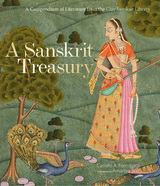
A Sanskrit Treasury
A Compendium of Literature from the Clay Sanskrit Library
Camillo A. Formigatti
Bodleian Library Publishing, 2020
This beautiful collection brings together passages from the renowned stories, poems, dramas and myths of South Asian literature, including the Mahabharata and the Ramaya?a. Drawing on the translations published by the Clay Sanskrit Library, the book presents episodes from the adventures of young Krishna, the life of Prince Rama and Hindu foundational myths, the life of the Buddha, as well as Buddhist and Jaina birth stories. Pairing key excerpts from these wonderful Sanskrit texts with exquisite illustrations from the Bodleian Library’s rich manuscript collections, the book includes images of birch-bark and palm-leaf manuscripts, vibrant Mughal miniatures, early printed books, sculptures, watercolour paintings and even early photograph albums. Each extract is presented in both English translation and Sanskrit in Devanagari script, and is accompanied by a commentary on the literature and related books and artworks. The collection is organised by geographical region and includes sections on the Himalayas, North India, Central and South India, Sri Lanka and South East Asia, Tibet, Inner and East Asia, and the Middle East and Europe. This is the perfect introduction for anyone interested in Sanskrit literature and the manuscript art of South Asia – and beyond.
[more]
READERS
Browse our collection.
PUBLISHERS
See BiblioVault's publisher services.
STUDENT SERVICES
Files for college accessibility offices.
UChicago Accessibility Resources
home | accessibility | search | about | contact us
BiblioVault ® 2001 - 2024
The University of Chicago Press









